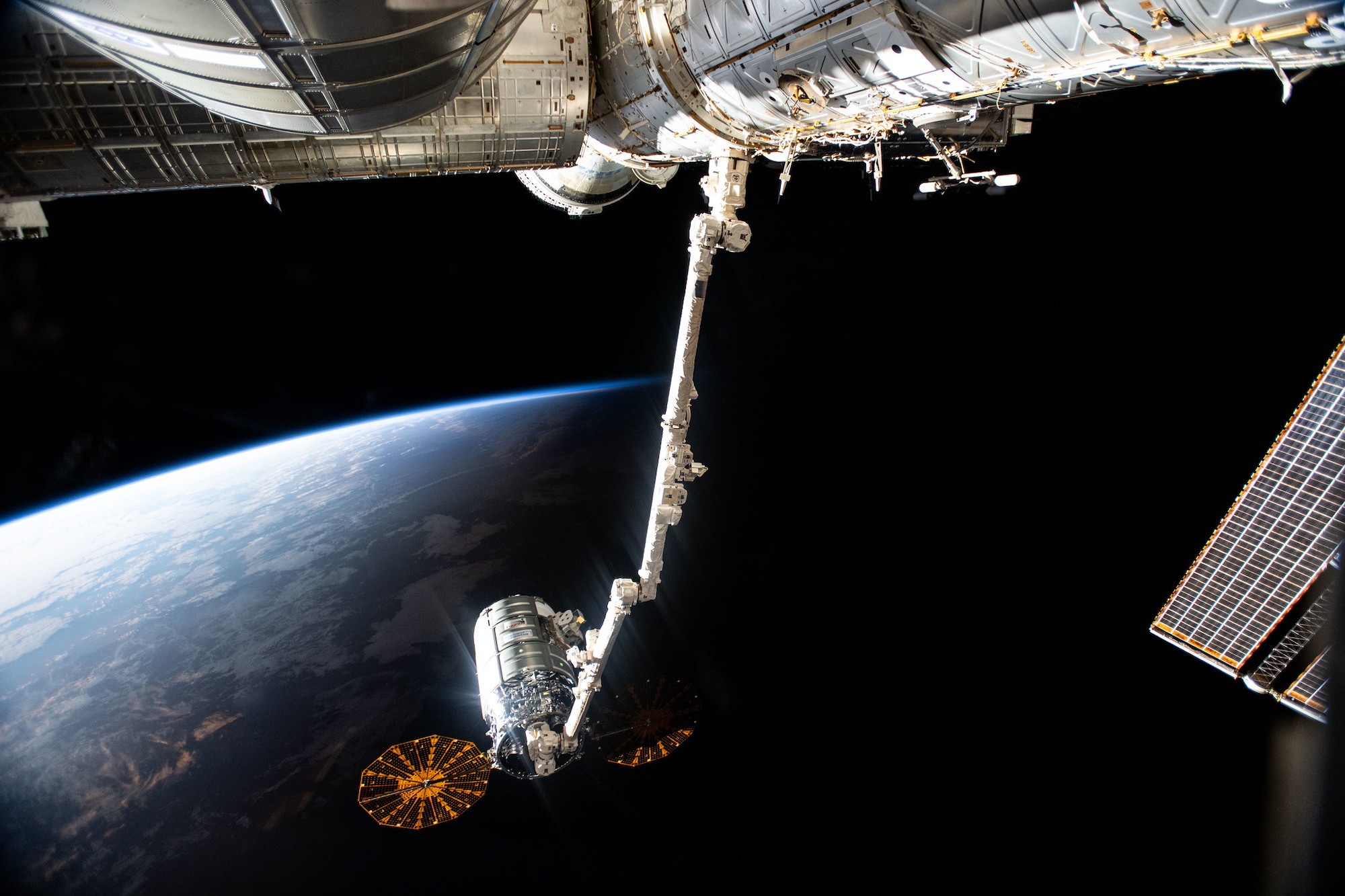Northrop Grumman’s Cygnus cargo spacecraft left the International Space Station (ISS) on July 12, after arriving there in February along with 3,700 kilograms of supplies, scientific research, commercial products and equipment.

NASA shared spectacular images of Cygnus before it left its orbital outpost, after which it descended and burned up in Earth’s atmosphere. The images show the spacecraft from different angles and in detail during its attachment to the station using the Canadarm2 robotic arm.
The spacecraft’s journey to the ISS began from Kennedy Space Center in Florida aboard a SpaceX Falcon 9 rocket. This was Cygnus’ first flight on a Falcon 9, as it was usually launched on an Antares 230+ rocket. Because of the war in Ukraine, the supply chain for Antares has been disrupted because it uses Ukrainian-made first stages and Russian rocket engines. Production of the Antares 230+ has ceased and it will be replaced by the Antares 330, developed by Northrop Grumman and Firefly Aerospace, which will be ready next year.
📸: @northropgrumman's Cygnus space freighter is pictured attached to the Canadarm2 robotic arm ahead of its release from the space station. Cygnus was released on July 12 at 7:01am ET, ending its five-and-a-half month stay at the orbiting lab. More pix: https://t.co/2k1R6AqEMs pic.twitter.com/EU8FoXPtQE
— International Space Station (@Space_Station) July 17, 2024
The latest Cygnus flight was Northrop Grumman’s 20th commercial mission to deliver cargo to the station for NASA. Cygnus’ first operational mission was in 2013, and since then it has only failed once in 2014 due to an anomaly with the upper stage of the Antares rocket, not a malfunction of the craft itself.
Cygnus consists of a service module and a pressurized cargo module to transport crew supplies, equipment and scientific experiments at an altitude of about 400 km above Earth. The service module contains advanced avionics, as well as guidance and navigation components that allow the spacecraft to autonomously dock with the ISS.
The spacecraft underwent numerous improvements over the years, allowing it to carry more cargo and improve other aspects of the vehicle.
Earlier we reported on how Cygnus had problems during its flight to the ISS.


